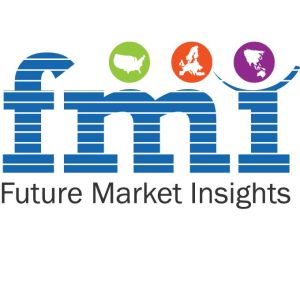Cannabinoid Therapy Market, 2018-2027 by Segmentation: Based on ProductPosted by vakhas on September 30th, 2019 Cannabinoid Therapy Market: Drivers The growing popularity of cannabis among the youth and legalization of recreational cannabis globally are the major factors responsible for driving the cannabinoid therapy market. Increasing incidences of multiple sclerosis spasticity, anorexia nervosa related to HIV/AIDS, nausea, and cancer are also contributing to the demand for cannabinoid therapy during the forecast period. The first FDA-approved cannabis drug has been launched and several cannabinoid therapies are on the receiving end of FDA approval. This factor might also drive the cannabinoid therapy market during the forecast period. Legal issues and cannabis-related abuse might hinder the market growth of cannabinoid therapy. Certain side effects related to the use of cannabinoids like, hallucinations, lung problems, impaired mental functioning, blood pressure problems, etc. might also hinder the market for cannabinoid therapy during the forecast period. A cannabinoid is a class of chemical compounds that change the neurotransmitter release in the brain by acting on cannabinoid receptors in the cells. Cannabinoids are derived from plants and are also referred to as the phytocannabinoids. Majority of the cannabinoids available for cannabinoid therapy are cannabis-driven, but there are several different plants from which cannabinoids can be derived as well. Approximately 70 plant compounds are identified for cannabinoids. Majority of these cannabinoids exhibit pharmacological activity and also at times, psychoactive effects. According to the study by Mechoulam and Hanus (2000), delta-9-tetrahydrocannabinol is the most intensively researched cannabinoid and exhibits the greatest psychoactivity among all the available cannabinoids. Cannabinoid therapy includes the use of these chemical compounds for various cancer cases, neuropathic disorders, spasticity conditions and is used for sedation as well. Legalization of the consumption of cannabis has increased the production and research related to cannabinoids. In the U.S., the District of Columbia and nine other states permit the use of recreational marijuana. Canada legalized the consumption of recreational marijuana in 2018. Cannabinoid therapy is being extensively used for sedation and treating nausea conditions in unfavorable environment. Request Sample Report@ https://www.factmr.com/connectus/sample?flag=S&rep_id=2833 Cannabinoid Therapy Market: Segmentation Tentatively, the global cannabinoid therapy market can be segmented on the basis of Cephalometric X-ray type, technology, product type, end users, and geography. Based on therapy type, the global cannabinoid therapy market is segmented as:
Based on product type, the global cannabinoid therapy market is segmented as:
Based on applications, the global cannabinoid therapy market is segmented as:
Based on end users, the global cannabinoid therapy market is segmented as:
Based on geography, the global cannabinoid therapy market is segmented as:
Cannabinoid Therapy Market: Overview Epidiolex, which is manufactured by the United Kingdom-based company called GW Pharmaceuticals is the first ever marijuana-based medication that got approved by the US FDA (Food and Drug Administration) and has become available for sale in all the 50 states in 2018. Cannabinoid therapy is being efficiently used for various neuropathic syndromes as well as epileptic conditions like Dravet and Lennox-Gastaut syndrome. Tetrahydrocannabinol is the most common cannabinoid therapy product that is available in the market. Many synthetic cannabinoids have been previously approved by the FDA. Manufacturers dealing with the cannabinoid therapy market are also focused on combining THC and CBD to develop drugs for the treatment of conditions like muscle spasms and stiffness which are associated with multiple sclerosis. Sativex, a combination of CBD and THC is a cannabis-derived and FDA-approved drug. Cannabinoid therapy is also highly popular among cancer patients for easing symptoms or side effects caused by treatments like chemotherapy. Cannabinoid Therapy Market: Regional Outlook North America’s cannabinoid therapy market is expected to grow the fastest over the period of forecast owing to the continued adoption and high FDA approval rate of the cannabinoid therapy in the region. Development of technologically-advanced cannabinoid therapy in the region is also expected to boost the market growth of cannabinoid therapy in the region. Europe’s cannabinoid therapy market is also anticipated to grow at a robust growth rate during the period of forecast because of increased demand and supply of cannabis-derived cannabinoids. The Asia-Pacific cannabinoid therapy market is estimated to grow at a decent rate during the period of forecast owing to the legal issues regarding the use of cannabis and low awareness about cannabinoid therapy. Cannabinoid Therapy Market: Key Players The major market participants operating in the global cannabinoid therapy market are Zynerba Pharmaceuticals, Cannabics Pharmaceuticals Inc., GW Pharmaceuticals PLC., Enecta, Alpha-CAT, Teewinot Life Sciences, Tilray, GD Pharma, Cyrelian Pty Ltd., Cape Bouvard Technologies Pty Ltd, MedReleaf Australia, and AusCann Group Holdings Pty Ltd. The report is a compilation of first-hand information, qualitative and quantitative assessment by industry analysts, and inputs from industry experts and industry participants across the value chain. The report provides in-depth analysis of parent market trends, macro-economic indicators, and governing factors along with market attractiveness as per segments. The report also maps the qualitative impact of various market factors on market segments and geographies. The report covers exhaustive analysis on:
Regional analysis includes:
Report highlights:
Like it? Share it!More by this author |


